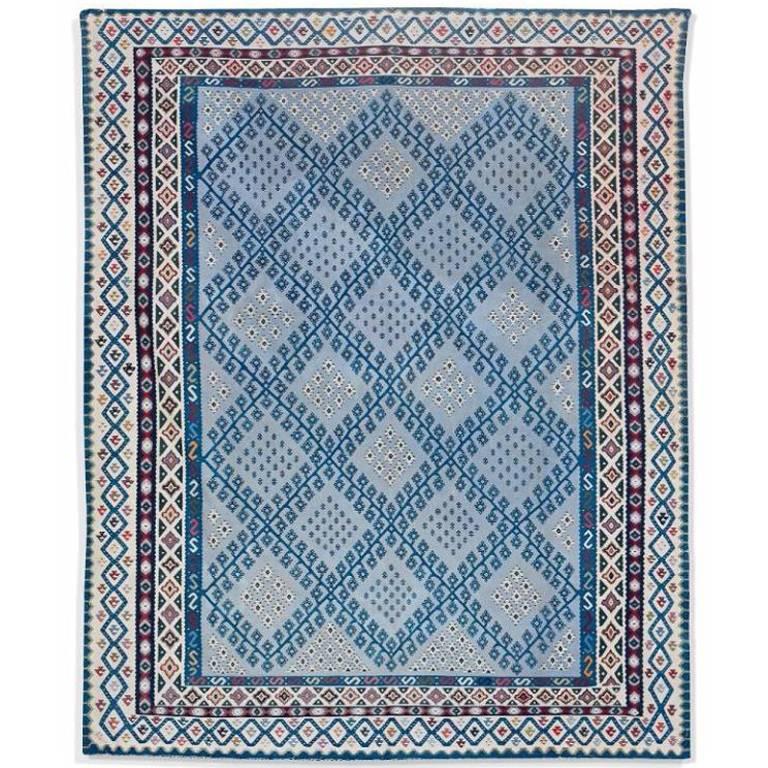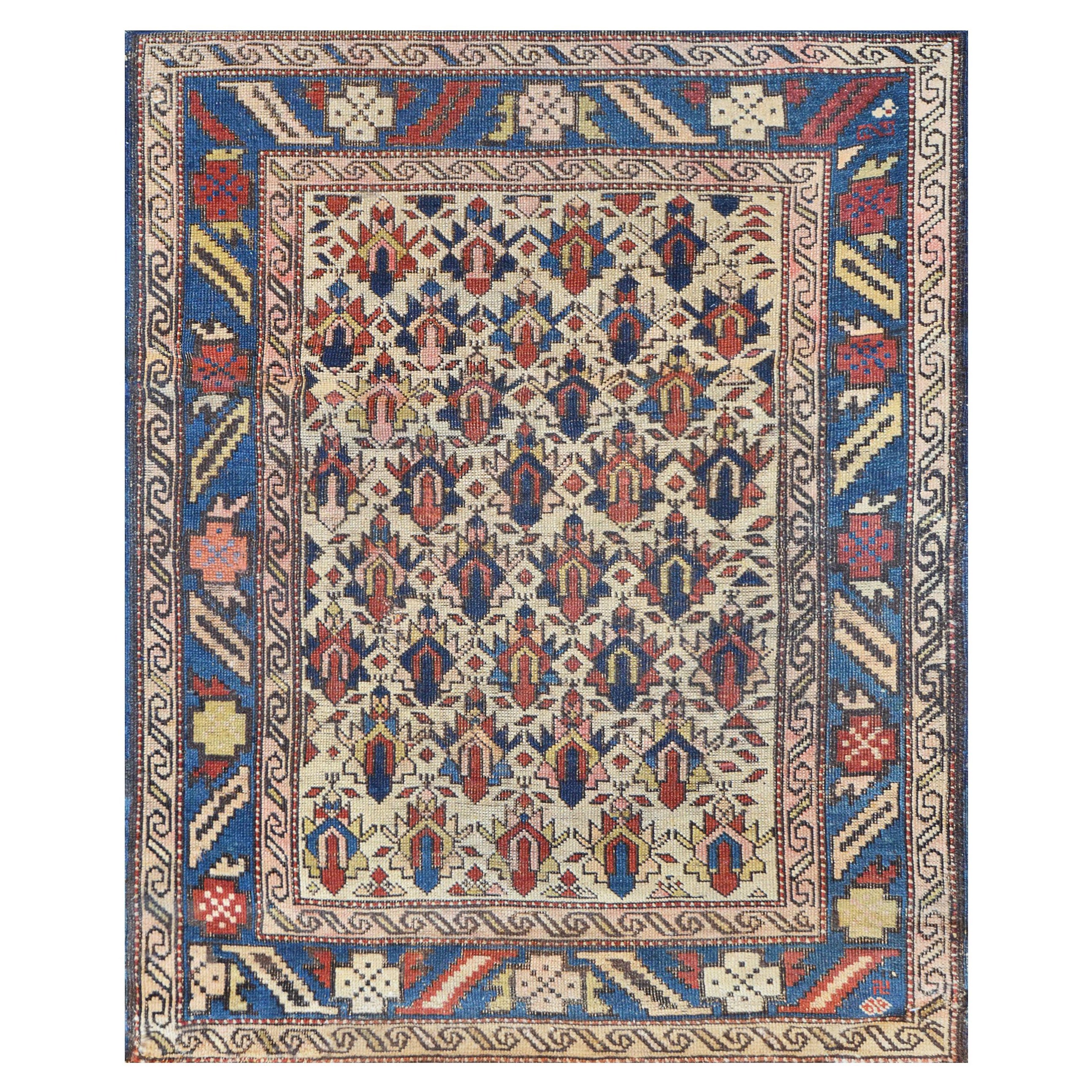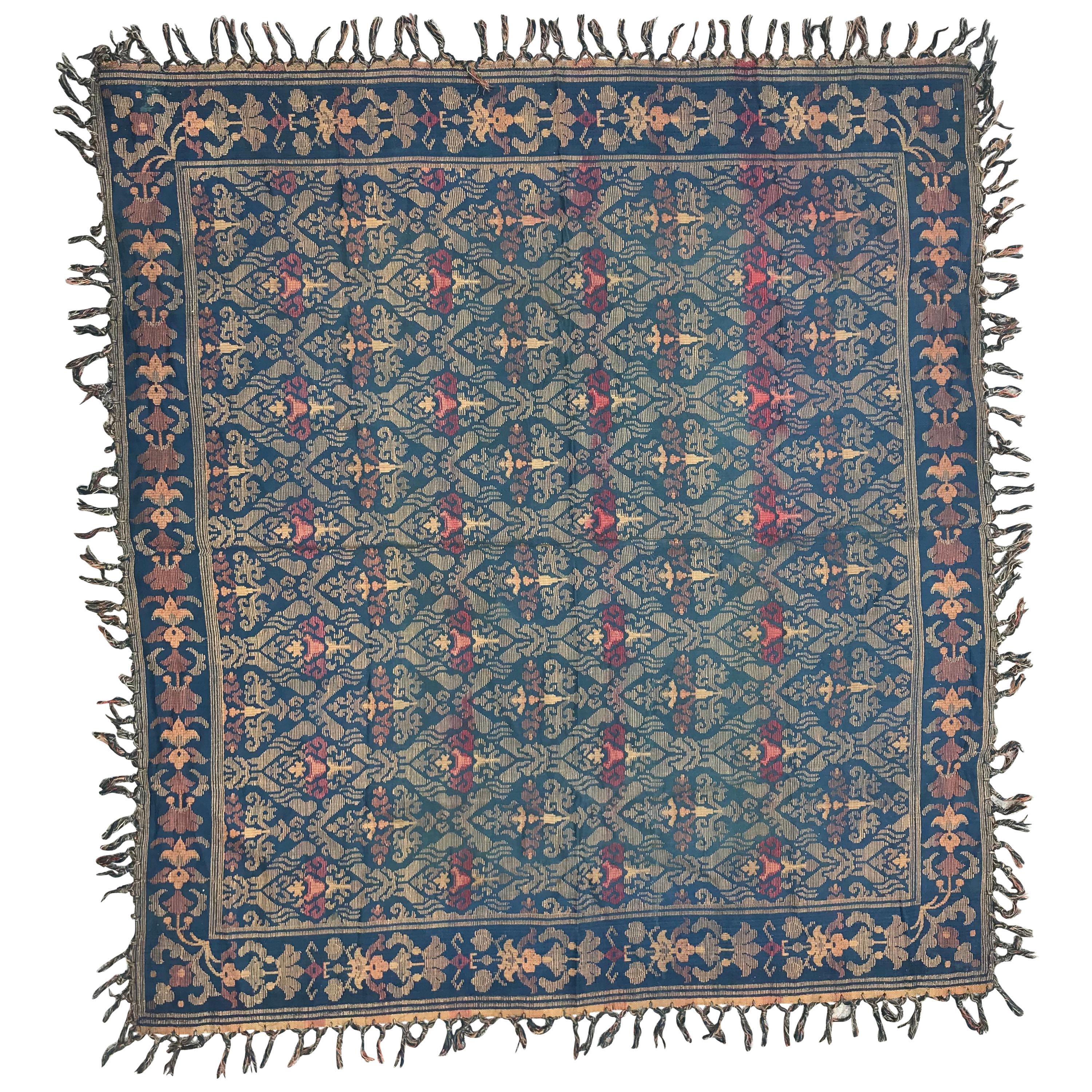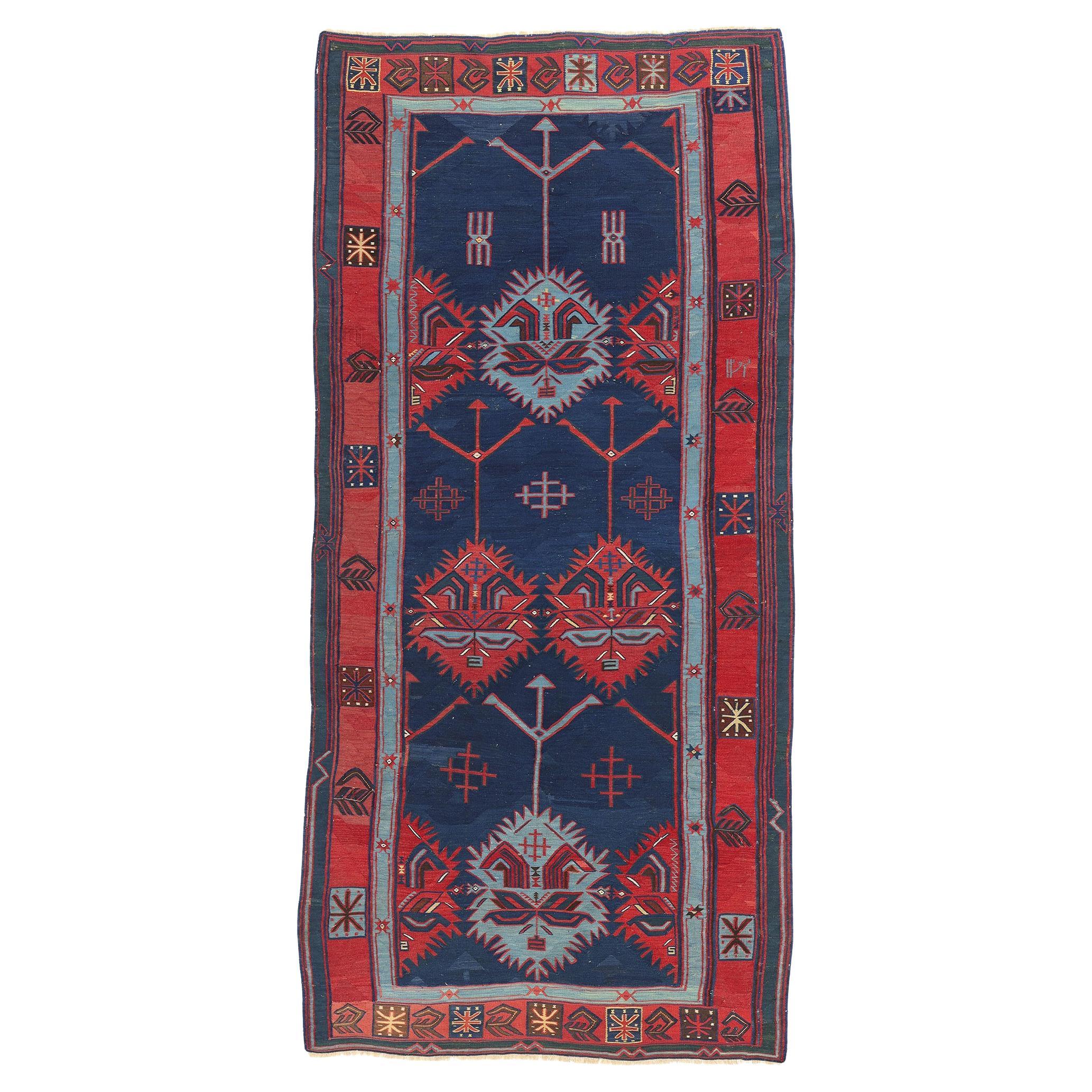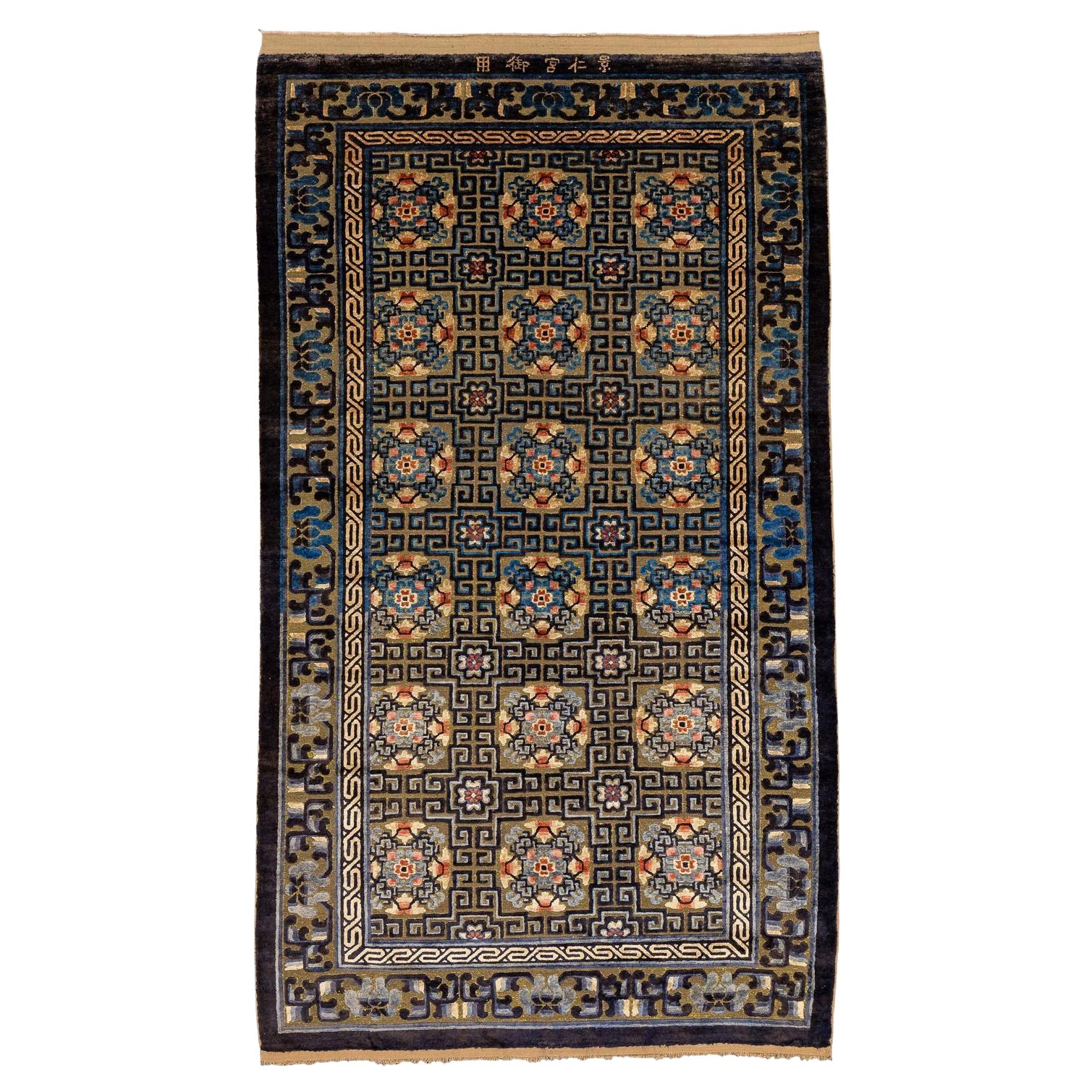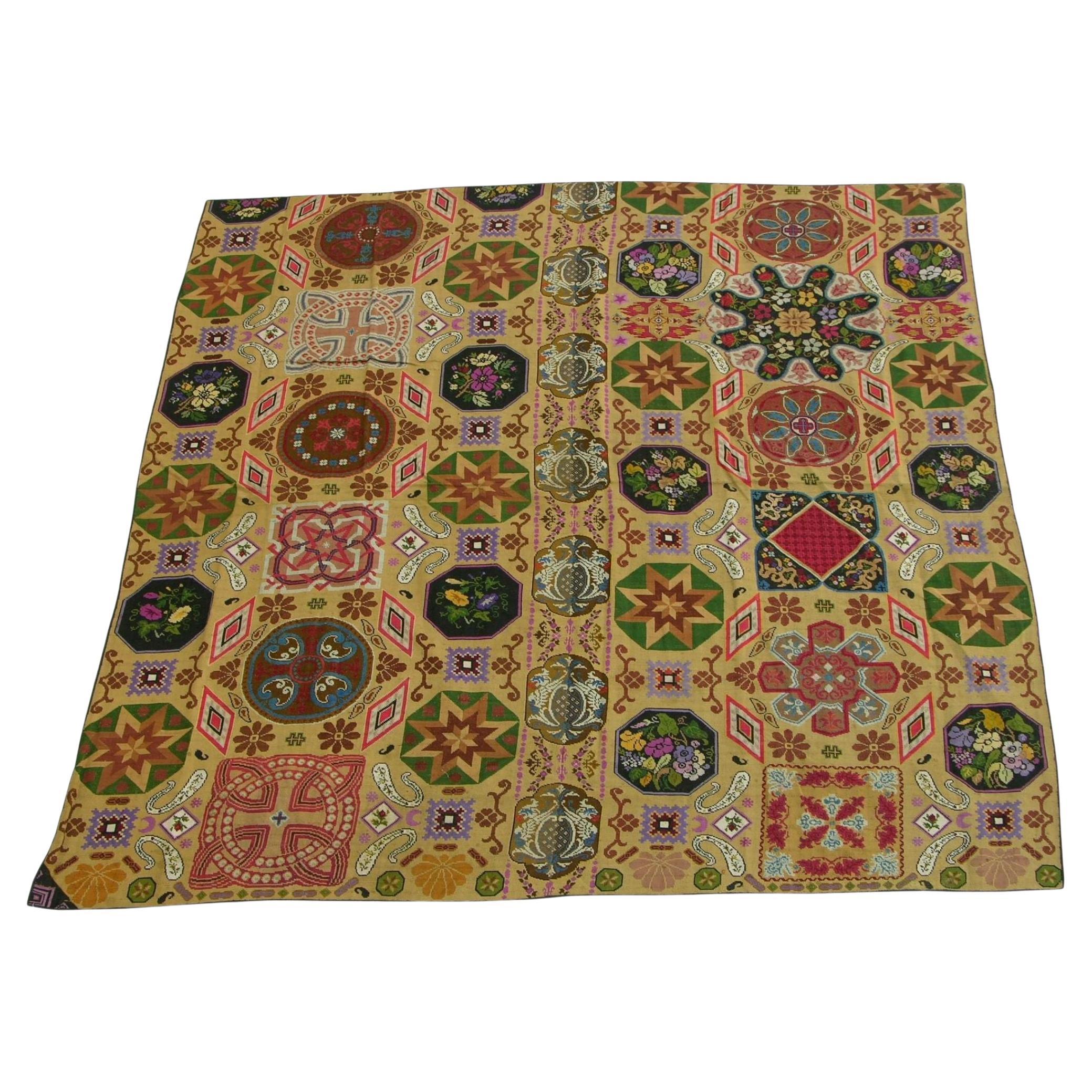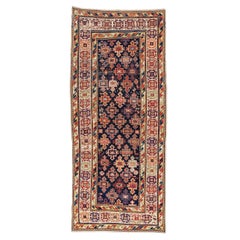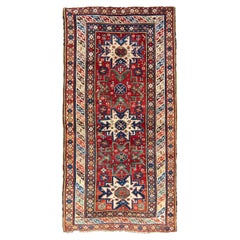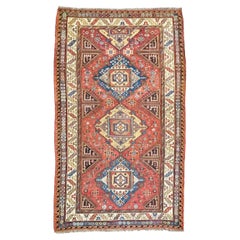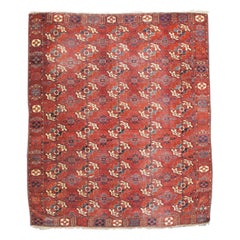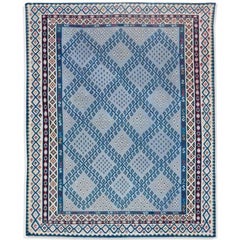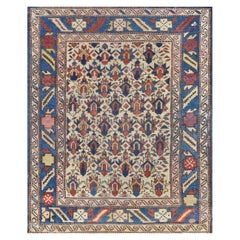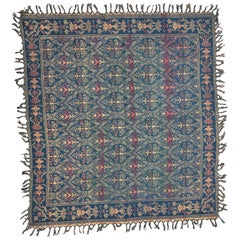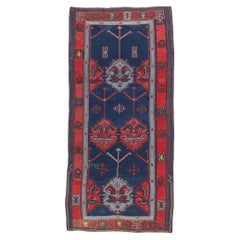Want more images or videos?
Request additional images or videos from the seller
1 of 7
19th Century Fine Silk Flat-Weave
$18,500
£14,021.94
€16,231.77
CA$26,117.19
A$29,083.58
CHF 15,185.20
MX$352,401.42
NOK 191,501.40
SEK 180,696.67
DKK 121,168.23
About the Item
This finely executed silk "zilleh" employs a supplemental weft all-over diamond pattern against a flatwoven tapestry-weave ground. The gem-like tones glisten from their shimmering white fastenings. This particularly rare example of South Caucasian weaving is probably of Armenian production. It is mounted and framed and ready for hanging.
- Dimensions:Height: 42 in (106.68 cm)Width: 23 in (58.42 cm)Depth: 0.3 in (7.62 mm)
- Materials and Techniques:
- Place of Origin:Azerbaijan
- Period:
- Date of Manufacture:Mid-19th Century
- Condition:This rug has not been acid washed.
- Seller Location:San Francisco, CA
- Reference Number:Seller: 138881stDibs: U1005188555152
About the Seller
4.7
Recognized Seller
These prestigious sellers are industry leaders and represent the highest echelon for item quality and design.
Established in 1976
1stDibs seller since 2008
37 sales on 1stDibs
Typical response time: 7 hours
Associations
The Art and Antique Dealers League of AmericaAntiques Associations Members
- ShippingRetrieving quote...Shipping from: San Francisco, CA
- Return Policy
Authenticity Guarantee
In the unlikely event there’s an issue with an item’s authenticity, contact us within 1 year for a full refund. DetailsMoney-Back Guarantee
If your item is not as described, is damaged in transit, or does not arrive, contact us within 7 days for a full refund. Details24-Hour Cancellation
You have a 24-hour grace period in which to reconsider your purchase, with no questions asked.Vetted Professional Sellers
Our world-class sellers must adhere to strict standards for service and quality, maintaining the integrity of our listings.Price-Match Guarantee
If you find that a seller listed the same item for a lower price elsewhere, we’ll match it.Trusted Global Delivery
Our best-in-class carrier network provides specialized shipping options worldwide, including custom delivery.More From This Seller
View AllAntique Avar Rug, Mid-19th Century
Located in San Francisco, CA
Antique Caucasian Avar Rug, Mid-19th Century
Additional Information:
Dimensions: 3'3" W x 7'3" L
Condition: Very Good
Origin: Caucasus
Period: Mid-19th Century
Rug ID: 16800
Category
Antique Mid-19th Century Caucasian Caucasian Rugs
Materials
Wool
Antique Caucasian Derbend Long Rug, Late 19th Century
Located in San Francisco, CA
Antique Caucasian Derbend Long Rug, Late 19th Century
This stunning Derbend from the Caucasus features
Additional Information:
Dimensions: 5'0" W x 9'9" L
Condition: Excellent
Orig...
Category
Antique Late 19th Century Caucasian Caucasian Rugs
Materials
Wool
Antique Caucasian Sumak, Late 19th Century
Located in San Francisco, CA
Antique Caucasian Sumak, Late 19th Century
Additional Information:
Dimensions: 5'4" W x 9'0" L
Origin: Caucasus
Period: Late 19th Century
Rug ID: 19491
Category
Antique Late 19th Century Caucasian Caucasian Rugs
Materials
Wool
Antique Tekke Main Carpet Rug, 19th Century
Located in San Francisco, CA
Antique Tekke Main Carpet Rug, 19th Century
Additional information:
Dimensions: 6'8" W x 7'8" L
Category
Antique 19th Century Central Asian Central Asian Rugs
Materials
Wool
Antique Chinese Kangxi Carpet Fragment, 17th Century
Located in San Francisco, CA
Antique Chinese Kangxi Carpet Fragment Rug, 17th Century
Additional information:
Dimensions: 3'10" W x 5'3" L
Origin: China
Period: 17th Century (2nd...
Category
Antique 17th Century Chinese Chinese and East Asian Rugs
Materials
Wool
Antique South Caucasian Long Rug, Late 19th Century
Located in San Francisco, CA
Antique South Caucasian Long Rug, Late 19th Century
Additional Information:
Dimensions: 4'2" W x 9'5" L
Origin: Caucasus
Period: Late 19th Century
Category
Antique Late 19th Century Caucasian Caucasian Rugs
Materials
Wool
You May Also Like
19th Century Handmade Wool Carpet
Located in Sofia, BG
19th Century handmade wool carpet in blue colors with geometrical figures.
circa 1860
Category
Antique Late 19th Century French More Carpets
Materials
Wool
Petite Handwoven Antique Wool Caucasian Rug
Located in West Hollywood, CA
This traditional handwoven Caucasian rug has an ivory field with patterned polychrome palmettes medallions enclosed in a royal blue border with alternating angled geometry and polych...
Category
Early 20th Century Caucasian Rugs
Materials
Wool
Antique Tablecloth Jaquar Loom Woven
Located in Saint Ouen, FR
Late 19th or early 20th century jaquar loom’s woven tablecloth, cotton.
Category
Antique Late 19th Century French Other Textiles
Materials
Cotton
Rare Antique Caucasian Avar Flat-Weave Carpet
Located in Dallas, TX
78944 Late 19th Century Antique Caucasian Avar Kilim Rug, 04'11 x 10'03. This handwoven wool antique Caucasian Avar kilim rug, crafted by the Avar people of the Dagestan region, is a...
Category
Antique Late 19th Century Russian Bohemian Russian and Scandinavian Rugs
Materials
Wool
Chinese Silk Rug Signed Metal Thread
Located in Ferrara, IT
This is an antique Chinese Silk Rug and metal thread souf carpet with a signature woven during the end of the 19th century and measures 210x121 CM in size....
Category
Antique Late 19th Century Chinese Other Chinese and East Asian Rugs
Materials
Metal
Antique Collectible Woolen Needlework
Located in Los Angeles, US
Needlepoint rugs were created using the traditional needlework weaving technique that is used to make everyday items from furniture to carpets and artwork. However, it has a fascinating history both as a hobby and as an industry. When many people think of carpets, they think of pile carpets or flat weave kilims, but needlepoint has also been used to create beautiful carpets. These carpets are durable and an important part of carpet history.
Archaeologists and scholars consider the roots of needlepoint to have been around 1500 BC. They consider the first needlepoint to include the fine diagonal stitches that were used to sew tents together by the ancient Egyptians. The art eventually evolved into tapestry weaving. However, a tapestry weaving differs significantly from needlepoint in that it uses a loom and vertical warp.
Tapestry weaving is closer to the weaving of kilims and pile rugs than canvas work. However, some still include tapestry weaving in the category of needlepoint because of the fine work that appeared during the late Renaissance. It can have a similar appearance to the untrained eye. Technically, tapestry weaving and needlepoint are not the same, and they do not use the same technique.
The first actual needlepoint rugs and needle-points began to appear in the late Renaissance. Needlepoint is worked by creating stitches on a stiff canvas. The canvas is typically made from jute or linen and is quite durable. Pieces from the Renaissance were used to cover footstools, chairs, pillows, bed headboards, and other furnishings. They were also used as table coverings and wall coverings. You could also find them on many small items such as purses, shoes, and various adornments for clothing.
During the Renaissance, the craft reached a high level of skill, and the designs became incredibly detailed and realistic. They mimicked many of the subjects and styles of famous paintings of the time. They created florals, still life designs, scenes, and geometric tiled pieces. Some of them mimicked the designs found in Persian Carpets.
Needlepoint reached its peak popularity in the 19th century when it was considered a proper occupation for a lady. Needlepoint and embroidery held a similar place in societal status at the time. During this time, the work became finer, with some of the canvas reaching a high level of detail. The level of detail is determined by counting the number of mesh in an inch. During this time petit point by French needlewomen could have a mesh count as high as 45 mesh. This allowed women to create highly intricate designs with incredible levels of detail.
It is possible to find many antique pieces of needlepoint besides rugs. Needlepoint rugs were popular in France and Spain, where the technique was adapted to create highly intricate designs that mimicked the designs in architecture and fashion. They were popular because they were durable, and it could be fashioned into a variety of items. The canvases themselves were durable, and the wool that they used was also strong, which means that many of the pieces were able to withstand daily use. We have many artifacts that have survived from this time period.
Needlepoint rugs are important collectibles because they are different from the pile rugs and kilims that are typically found on the market. Needlepoint carpets are special because they take many hours to create, especially larger works. Needlepoint pieces of any type became popular throughout Europe during the 19th century. It is still a popular hobby today, but perhaps one of the most interesting stories is that of the Portuguese needlewomen of Arraiolos.
The story of these women and their beautiful carpets begins in 1492. Needlepoint was a popular occupation in Spain, which had a large population of Moors and Jews. They were an integral part of Spanish culture. However, in 1492, Queen Isabella of Spain issued a proclamation that gave these ethnic groups the order to pack their bags and board ships headed...
Category
Antique Early 1900s Other Russian and Scandinavian Rugs
Materials
Wool
More Ways To Browse
Tapestry Flat Weave
Mid Century Wool Blanket
Peru Blanket
Chinese Silk Quilt
Kente Cloth
Viso Blanket
Early American Coverlets
Ghana Textile
Indian Silk Quilt
Mali Blanket
Pendleton Vintage Blankets
Viso Mohair Blanket
Cashmere King Size Blanket
Ewe Cloth
Indian Trade Blanket
Pendleton Wool Blanket Vintage
Wedding Quilt
Gujarati Furniture
